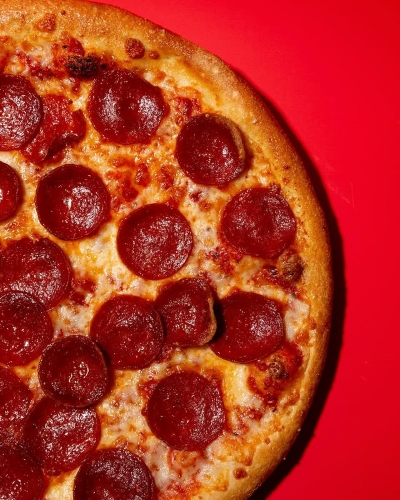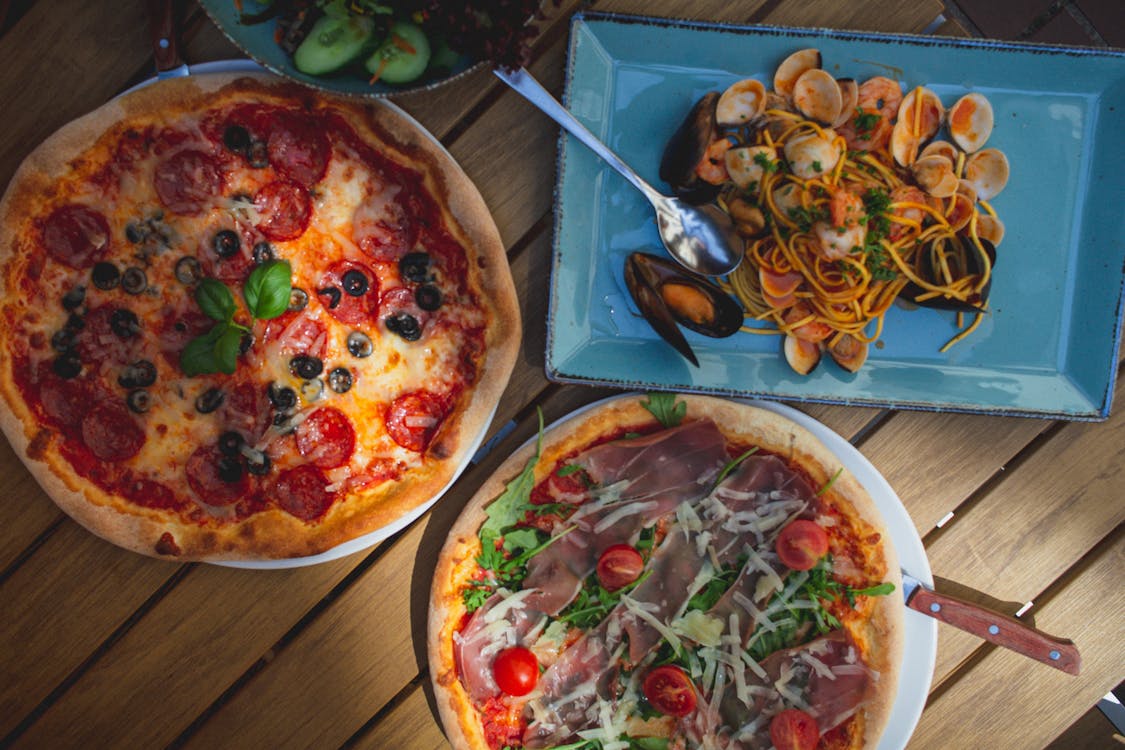Let’s face it—we all adore pizza. However, the stakes are much more than a small piece when you have to decide between your local pizzeria and the usual convenience of major pizza chains. Although the corporate chains may guarantee speed and convenience, the real essence of pizza is the comfort of a neighborhood oven, the depth of regional ingredients, and the beauty of culinary art. Toppings are always free, and pizzas are sold by size in a remark that really does tell volumes about the honesty and friendliness of the local pizza stores.
At a time when everything is increasingly standardized, it’s the distinct character of local pizzerias that reignites our appetite for authenticity. These locally based businesses surpass corporate behemoths not just in taste and freshness, but also in cultural depth, customer service, and community involvement. This blog investigates why local pizza still surpasses the mass-produced sameness of major brands by looking at everything from distinct pizza toppings to the value of local products, and highlighting how local pizzerias maintain the spirit of traditional pizza.
Fresh, High-Quality Ingredients: The Flavorful Foundation
The key to an outstanding pizza is the quality of ingredients. While large pizza chains make extensive use of pre-packaged, frozen ingredients to increase production efficiency and keep costs down, local pizza restaurants procure ingredients from local sources and emphasize freshness as the utmost priority. What this means is that there is a huge variation in taste, texture, and nutrition.
When you take a bite of a slice from a neighborhood pizzeria, you’re probably tasting freshly-shredded mozzarella from a neighborhood creamery, hand-crushed San Marzano-style tomatoes in the sauce, and a crust from dough that was hand-kneaded and fermented naturally. These subtleties add up to a higher gastronomic experience that mass production cannot match.
Unique & Authentic Recipes That Tell Stories
One of the strongest appeals of neighborhood pizzerias is their food storytelling. Most of these restaurants are family-owned businesses, and their pizza recipes tend to have generational roots. The focus on distinct pizza toppings and artisanal flavor pairings respects the culture, heritage, and identity of the community.
In contrast to large pizza chains that rely on a one-size-fits-all approach, small restaurants are open to experimentation and seasonal creativity. You’ll encounter pizzas topped with everything from locally grown figs and arugula to homemade chorizo and reduced balsamic glazes.
Handmade Craftsmanship vs. Mass Production
The process of pizza-making is an artisanal craft—one that local pizzerias uphold with pride. Every step is done thoroughly, starting from dough fermentation to the topping position. In contrast, large pizza chains use pre-made crusts and automated topping machines intended to give consistency rather than authenticity.
A well-crafted local pizza crust often undergoes slow fermentation for 24-72 hours, developing a complex flavor profile and light, airy texture. This is quite different from the fast-rise bread found in chains, which might give a dull and rubbery foundation. The sensitive spread of hand-tossed dough, the exact arrangement of ingredients, and the best bake on a hot stone or pan all combine to make pizza more satisfying and luxurious.
Supporting Local Economies
When you eat local pizza, you’re not only savoring a delicious meal—you’re contributing to a virtuous economic cycle that supports your community. Unlike corporate conglomerates that drain profit for out-of-town headquarters, local pizzerias recycle their profits back into the local economy, provide jobs, and build strong relationships within neighborhoods.
Local establishments source local ingredients from farmers, dairies, and artisans nearby, encouraging a farm-to-fork model that not only reduces environmental impact but also stimulates regional growth. Such businesses also tend to be regular patrons of other local businesses, therefore creating a more neighborly wealth.
Economic Benefits:
- Investment back into the community: Spending money at a local pizza parlor is more likely to remain in your community, funding schools, infrastructure, and other small businesses.
- Building up local supply chains: From flour mills to cheesemakers, local pizzerias drive demand for small-scale produce and artisan products.
- Job creation and economic resilience: Local restaurants support sustainable jobs, commonly multigenerational family-run businesses that are the backbone of the regional economy.
Discover the true value of supporting local pizzerias here.
Personalized customer support and local linking

When you step into a local pizzeria, someone is likely to greet you by your name. The interaction has some inherently human element: your eating habits are recalled alongside your favorite orders, employees actually care about your feedback. Such intimacy makes customers become part of a community and not merely transactional elements, thus creating a sense of belonging.
Local pizza restaurants offer customized information that enhances the pleasure of eating compared to chain pizza operations, in which contacts are often cold and impersonal. Local firms offer greater emotional value, ranging from customized notes on takeout containers to courteous conversations during lulls.
Personalized Service Highlights:
- Direct interaction with owners and chefs: This enables customers to talk directly to the culinary masters and express needs directly, leading to a more individualized, rewarding meal.
- Special requests accommodated with enthusiasm: From a unique gluten-free crust to an extra drizzle of truffle oil, local pizza restaurants delight special requests with love and compassion.
- Loyalty recognized through gestures: Loyalty recognized via actions: Rather than relying on corporate reward schemes, local pizzerias thank regulars with honest gratitude, free sides, or a handwritten thank you note.
One such hidden treasure of a pizzeria is Manny & Olga’s. Why don’t you check out our vibrant menu or plan a pickup from one of our outlets? We can’t wait to give you a taste of our savoury slice of pizza.
Cultural Identity and Culinary Heritage
Whether it’s a Greek-themed menu in a multi-cultural neighborhood or a New York-style crust in a midwestern community, the food bears a cultural signature. This is the complete opposite of large pizza chains, which homogenize flavors and water down culinary diversity.
Eating at a local pizza restaurant gives you a taste of your area’s historical recipes, handed down over the years, locally sourced spices, and toppings influenced by regional customs. These unique pizza toppings embody regional character and communal memory.
Cultural Contributions
Heritage-inspired menus: From Sicilian thick crusts to Middle Eastern za’atar-topped slices, local pizzerias honor heritage-inspired menus by offering a variety of culinary influences.
Seasonal flavors reflecting local agriculture: Menus change with the harvest to guarantee that each bite links you to the natural rhythm of the land.
Community stories infused into every pie: Every pizza tells a story of place, tradition, and passion, starting from recipe origins to ingredient sourcing.
Innovative and Seasonally Inspired Menus
Where creativity is nurtured, innovation thrives. Local pizzerias often have changing menus that feature customer-driven ideas, culinary styles, and seasonal products. This flexibility lets them stay ahead of the curve, rather than major pizza franchises that introduce new products only following rigorous market research.

Look for heirloom tomatoes on pizzas during summer, roasted squash on pizzas during fall, and even wild mushroom combinations during spring. Such unique pizza toppings make the dining experience exciting, new, and dynamic.
Learn how local pizzerias can give the chain stores a good run for their money!
Customization and Culinary Freedom
The sign of any great local pizza establishment is its openness to accommodating individual tastes. If you have dietary needs or just want to get adventurous and try something out of the ordinary, local pizzerias provide the ability to make every aspect of your pie your own.
You may choose gluten-free crusts, plant-based cheese, or even cauliflower crust. The sauce options—while less complicated than in commercial establishments—are more deliberately selected. Ingredients are added at the moment, massaged for flavor and size, and adapted according to customer criticism, so that each pizza is a dynamic work of art.
Ever wondered how menu customization can transform casual diners into loyal brand advocates? Take a look at this article.
Sustainability and Environmental Responsibility
Environmental awareness is increasingly influencing consumer behavior, and for good reason. Local pizza shops tend to use greener practices, such as compostable packaging, low food miles, and ethical sourcing of local ingredients. These green practices not only minimize environmental degradation but also appeal to the growing eco-conscious demographic.
Explore a Flavorful Journey with Manny & Olga’s
It’s about flavor that’s real, experiences that are true, and a community that’s closely knitted. From gourmet pizza toppings to locally grown ingredients sourced responsibly, the journey from dough to table in a neighborhood pizzeria is characterized by intention, care, and personality.
Not sure what to get next? Immerse yourself in the richness of handcrafted flavor and community-driven excellence. Manny & Olga’s isn’t just making pizza—it’s constructing flavor moments that speak to heritage, celebrate imagination, and redefine late-night comfort food. Taste the best—order now and be a part of the flavor revolution!
